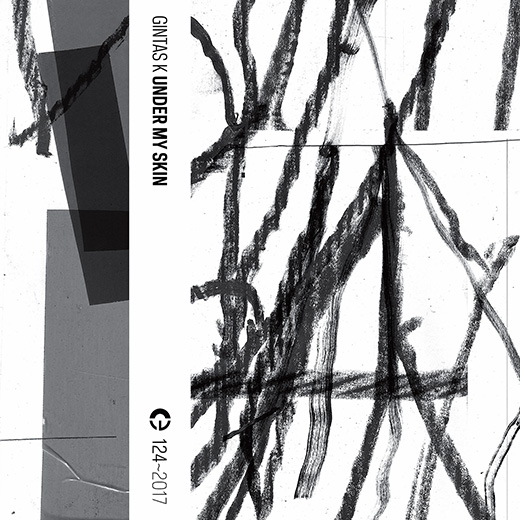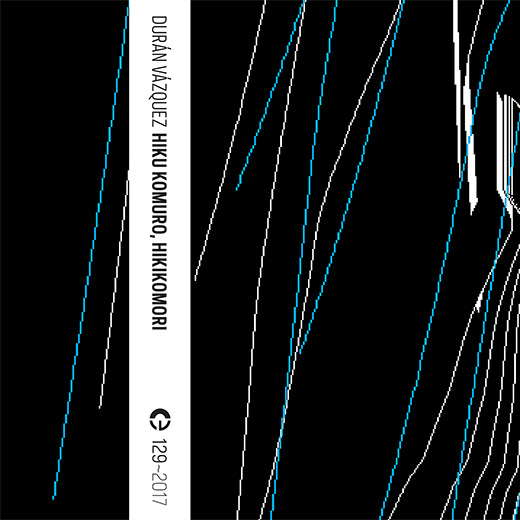
Mi avvicino con passo guardingo, fingo di non conoscere l’essere impalpabile che governa il mondo nel quale mi trovo. So per certo che al minimo cenno lui si volterà , cercherà i miei ricettori sensoriali e trovati, inizierà la danza circolare che pian piano avvolgerà tutte le mie difese trascinandomi tanto così, vicino alla sorgente della sua magia.
Succede sempre, immancabilmente da quando ho iniziato ad ascoltare i suoi lavori, nel 2009. Brock Van Wey in arte BVDUB espande nuovamente l’eco irresistibile della sue visioni, la sostanza metafisica che le compone e lo fa attraverso una delle più prestigiose labels in circolazione, l’italiana Glacial Movements che produce l’ultima possente produzione del sound artist americano: Epilogues For The End Of The Sky.
Il suo tratto, oramai noto, ha la capacità di non stancare. Al pari di qualche misteriosa soluzione chimica, una volta assunta richiede di essere riproposta all’ascolto per un numero svariato di volte. Ad ogni assunzione i particolari si sommano ai particolari, la base ambient allarga all’infinito le sue spire accogliendo al suo interno esplosioni musicali che si dilatano e abbracciano e si mescolano in un unico codice d’ascolto che si erge maestoso al limite dello spleen e dello splendore tardo romantico. Iterazione infinita, voci in loop, echi, droni e uso massiccio di melodia, questa la riserva immaginaria che serve per raggiungere l’angolo remoto dove termina il cielo.
La traversata continua, abbandonati i cieli infiammati dal dolce languore elettronico, mi ritrovo nel vasto territorio abitato dai suoni taglienti e dolorosi di Maurizio Bianchi che occupa una side delle due che compongono questo split EP prodotto assieme ad Abul Mogard. Due mondi decisamente lontani che hanno in comune un luogo d’origine: la fabbrica. Da sempre referente sonico per MB e la sua filosofia industriale, reale luogo di vita lavorativa per Abul Mogard, abbandonato solo dopo la raggiunta pensione.
Come sempre il suono di MB ci penetra da parte a parte, non permette tregua, si irradia lucido e diretto usando i canoni della ripetitività industriale. Tutto attorno il caos di un mondo in delirio che gira vorticoso attorno al ritmo della battuta imposta dalle macchine. Danza folle, trasfigurata belle èpoque meccanica, trionfo del vuoto dell’anima schiacciata dagli ingranaggi di un’ansia che appare come Hydra, creatura che si rigenera, ferita dopo ferita
Tutto si placa, all’improvviso. Una dolce, gentile litania sale lenta iniziando ad avvolgermi. Abul Mogard è qui, vicino a me. Lo sento. Ascolto le amate antiche onde soniche del suo synth modulare, la soffusa melodia del Farfisa, la grazia sconfinata di un suono che non riesco ad abbandonare. Il suo gesto artistico è colmo di antica gentilezza e celata poesia, la sua musica colloquia con te, ti permette di aprire pagine di lettura intima. Con lui a fianco ti commuovi pensando ad un passato per sempre fermo nell’attimo del ricordo.
Durante questo breve viaggio ho incontrato varie tipologie di sound artists ma quello che mi attende nell’angolo più buio e metropolitano del paesaggio sonoro che sto attraversando, è forse il più misterioso e complicato da capire. Si chiama Ran Slavin, principalmente si occupa di video installazioni, ma il suono ha sempre accompagnato il suo respiro.
Digital Junkies In Strange Times è il suo ultimo lavoro, l’ennesimo per la portoghese Crònica che lo distribuisce in free download via Bandcamp. Un titolo che meglio non poteva rappresentare l’attualità di un popolo curvo sul proprio pc, totalmente assuefatto al suono che quei circuiti producono, musica che veste perfettamente la taglia di questi strani tempi. Quattro traccie che non rispondono a nessun canone di genere, sbandano volutamente tra l’ambient, il jazz, il soul, la ricerca e l’improvvisazione. Un melting pot metropolitano nel quale stranamente ci si riconosce e ‘piacevolmente’ ci si immerge, convinti di far parte di un mondo abitato da junkies digitali, con i motori di ricerca sempre spinti al massimo della potenza. Mirco Salvadori
via Sherwood







